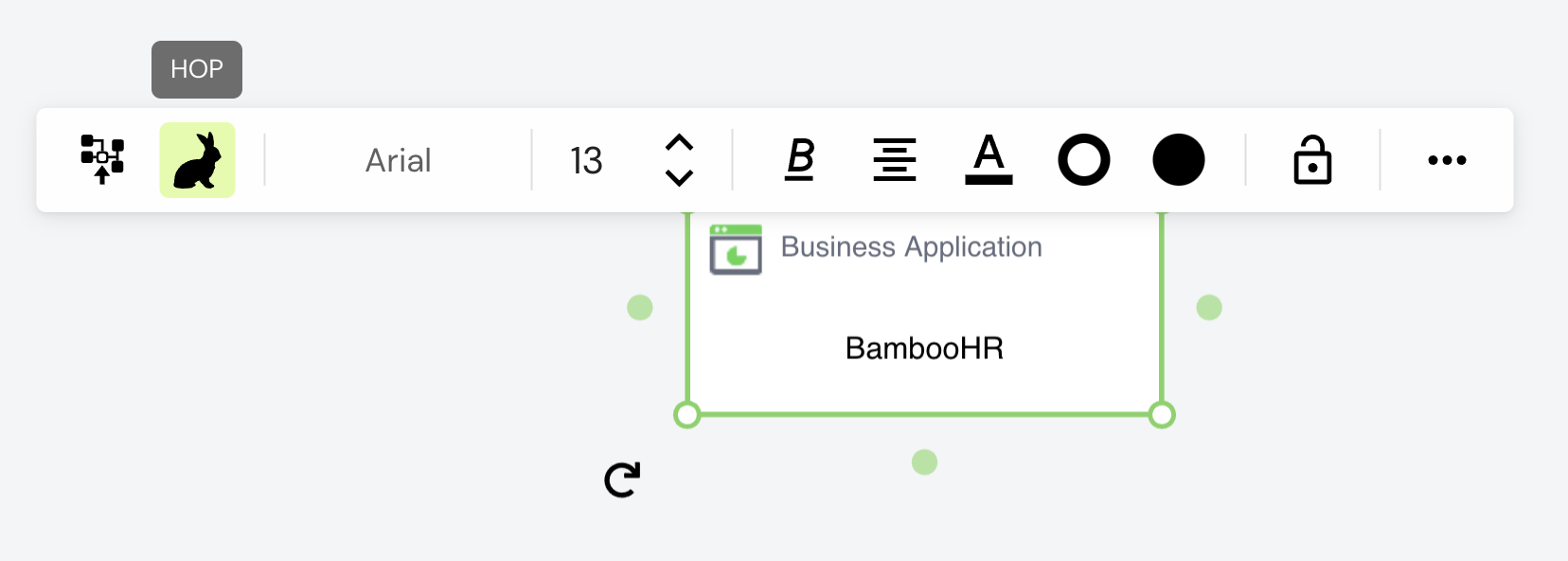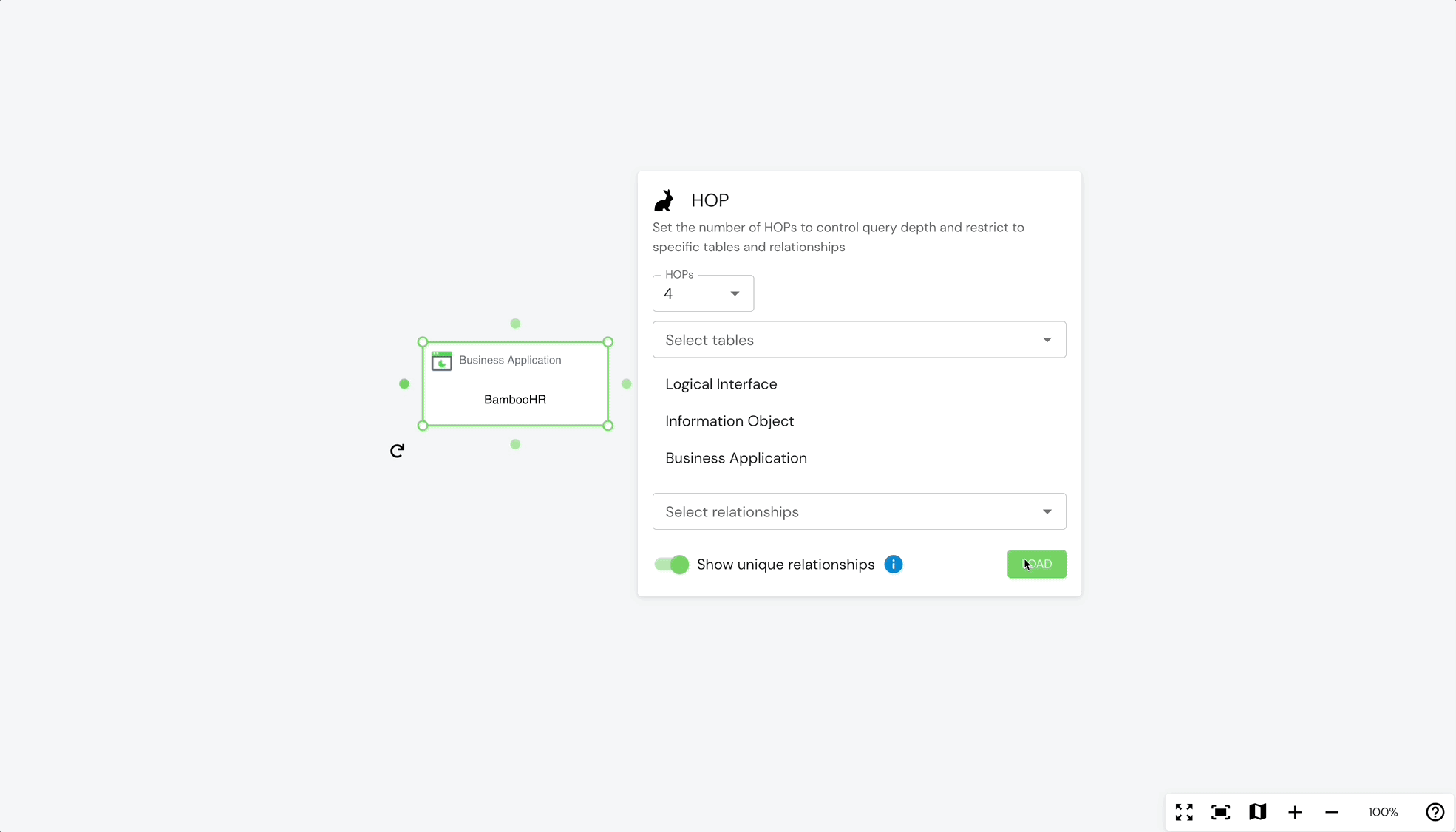HOP
The HOP feature in YouDesign allows users to visually navigate and explore connected elements through multiple levels of relationships. Accessible via a rabbit icon in the toolbar, users can configure the depth of the query (up to 5 hops), select specific tables and relationships, and display unique connections. With real-time loading and a non-blocking interface, HOP helps users gain deeper insights into their data by expanding and visualizing relationships on the canvas.
HOP Feature Overview
The HOP feature in YouDesign allows users to explore and query related nodes (elements) in a structured way, visually expanding relationships through multiple levels of connections (up to five hops). This feature provides flexibility in navigating and analyzing dependencies within the system.
Accessing the HOP Feature
-
Select a Node (Current State Element)
To begin using the HOP feature, select a current state element on your board. -
HOP Icon in the Toolbar
Once a node is selected, the HOP icon, represented by a rabbit, will appear in the toolbar.

- Click the rabbit icon to open the HOP settings window.
Configuring the HOP Query
The HOP settings allow users to customize the depth of their queries by specifying the number of hops, as well as selecting tables and relationships to refine the results.

HOP Settings Window
-
HOP Levels (1 to 5):
Set the number of hops (or levels) to control the depth of the query. Each hop represents an additional level of relationships.- Default value: 1 Hop (directly related nodes).
- Up to 5 Hops can be selected to traverse deeper relationships.
-
Table Selection:
Use the drop-down menu to select specific tables to constrain the query to certain datasets. You can search for tables or add multiple tables from the available list.- If no tables are selected, the query will consider all available tables.
-
Relationship Types:
Specify the relationship types you want the query to consider. By default, all relationship types are included unless specified.- You can search for specific relationship types and add multiple relationships to the query.
-
Unique Relationships Toggle:
Toggle to only show unique relationships. When enabled, this option ensures that only unique relationships between nodes are shown, preventing duplicate types of connections.\
Execute the HOP Query

Once all settings are configured:
-
Click the “LOAD” Button
Press the LOAD button to execute the HOP query. The system will return the related nodes based on the number of hops, tables, and relationships selected. -
Loading Indicators
As the query processes, real-time updates will appear, showing the progress of each hop:- Example: "HOP 1 is loading..." followed by "HOP 1 successfully loaded."
-
View Results on Canvas
The queried results will be rendered in the canvas, visually expanding to show the nodes connected through the defined hops. -
Non-Blocking UI
While the query is running, users can continue working within the application, as the system ensures that the UI remains responsive and non-blocking.
If no content is found based on the HOP query, a message will be displayed: “There is no content to be loaded.”
If an error occurs during the query, an error message will guide the user to recheck the settings or attempt the query again.
Updated about 1 year ago
